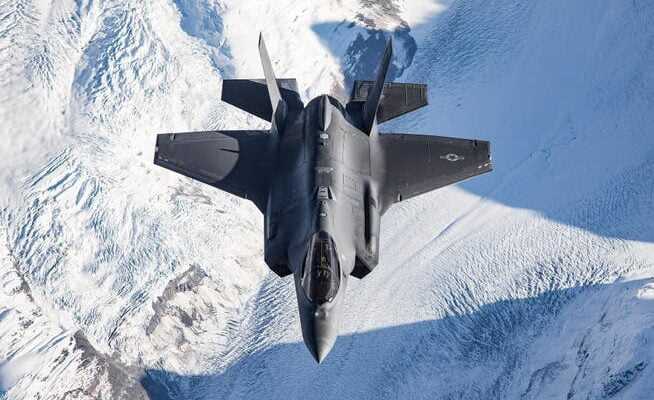The new F-35 fighter jet favored by the Federal Council is louder than the previous F/A-18. However, because the number of take-offs and landings will be halved in the future, noise pollution should not increase overall.
The F-35 is louder than the previous Swiss fighter jet F/A-18, especially during take-off.
tsf.
The Department of Defence, Civil Protection and Sport (VBS) has informed the regions of the Payerne, Meiringen and Emmen military airfields about the noise pollution that can be expected with the F-35. It has one on Wednesday Short report on the measurements of the Swiss Federal Laboratories for Materials Testing and Research (Empa) released. The detailed report is confidential because it contains data that manufacturers want to protect.
3 decibels louder
According to the brief, the F-35 is on average about 3 decibels louder on takeoff than today’s F/A-18. The VBS writes that the difference is just perceivable with the ear. At noise levels, humans can at best perceive a difference of one decibel. An increase of 10 decibels is usually perceived as a doubling of the volume.
In contrast to the take-off, the values for the landings hardly differ. Here, the exposure from the F-35 is on average only 0 to 1 decibel higher than the F/A-18. When taxiing on the ground, the F-35 was around 5 decibels louder. The proportion of lower frequencies is greater in the F-35 than in the F/A-18. Low frequencies carry further than higher ones.
Half as many takeoffs and landings
In addition to the noise during take-off and landing, the number of flight movements is also important for estimating the total noise exposure during a year, writes the DDPS. With the F-35, flight movements could be reduced by about half due to the longer training missions. That means: The F-35 should take off and land less than the F/A-18. This means that the annual noise pollution will remain the same as today.
In concrete terms, the number of actual flight movements in Payerne will drop by 50 percent from today’s 8391 to 4200, in Meiringen by 50 percent from today’s 4096 to 2040 and in Emmen by 70 percent from 3616 to 1090.
On the basis of these movement figures, the DDPS wants to calculate the effective noise pollution for the three military airfields by the beginning of 2023 in cooperation with Empa. The results are to be disclosed to the authorities and interest groups.
Further noise reduction measures
In cooperation with the manufacturer Lockheed Martin and Empa, the DDPS is also examining additional options for noise reduction, such as optimization of flight geometry and flight speed. As part of the noise abatement, the DDPS has announced that it will have additional soundproof windows installed in the vicinity of the military airfields.
